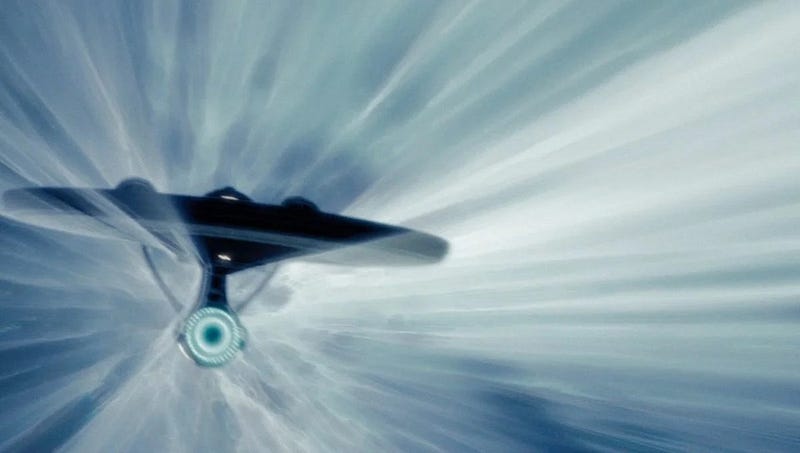Can We Truly Observe a Ship Moving at Light Speed?
Written on
Chapter 1: The Concept of Light Speed in Space
In response to a subscriber's intriguing question, we delve into whether it's possible to see an object traveling at the speed of light, such as a colossal alien spacecraft from a distance. The fundamental reality is that no object with mass can reach the speed of light, making the straightforward answer: it’s not visible, as this scenario cannot occur. Nonetheless, let’s explore this hypothetical situation further.

Scene from the TV series “Star Trek”
As a spaceship's velocity nears the speed of light, it begins to display the effects described by special relativity. Specifically, phenomena such as Lorentz length contraction and time dilation come into play.
Section 1.1: Effects of Special Relativity
As the spacecraft accelerates closer to light speed, an external observer—like us—will notice that its linear dimensions in the direction of motion diminish. While the ship appears shorter, its width and height remain constant. When traveling at speeds approaching the speed of light, the ship's length may nearly vanish, making it challenging for anyone without specialized equipment to detect it. In such cases, an observer would only perceive the front and back of the ship as flat images, visible only from specific angles that compress as the ship speeds up. At the speed of light, it would only be observable if the observer's line of sight perfectly aligns with the ship's trajectory.

Section 1.2: The Challenge of Light Perception
Another significant factor to consider is the redshift and blueshift of light emitted and reflected by the ship. For an observer positioned in front of the ship traveling at near-light speed, the emitted light will display an extremely short wavelength, making detection incredibly difficult. Should the ship somehow reach light speed, the wavelength would become zero, rendering observation impossible, particularly since the light and the ship would arrive at the observer simultaneously. Conversely, an observer situated behind the ship would experience the light as having a long wavelength due to redshift, which would become infinite at light speed, thus making it undetectable. In summary, detecting a ship at speeds close to light is complex, while at the speed of light, it becomes entirely unfeasible.
Chapter 2: The Implications of Special Relativity
This discussion is purely theoretical and rooted in the principles of special relativity, which asserts that no object with mass can attain the speed of light.
In the video "What would we see at the speed of light?", we explore the fascinating consequences of traveling at light speed and its impact on visibility.
The video "What You Would SEE if You Traveled Near the SPEED of LIGHT" further illustrates the extraordinary visual effects one might encounter.
If you enjoy articles about space and science, consider clapping to see more! Subscribe to our channel and feel free to ask questions for future discussions. If you appreciate my work, you can support us by joining Medium for just $5 a month, helping us create even more engaging content.